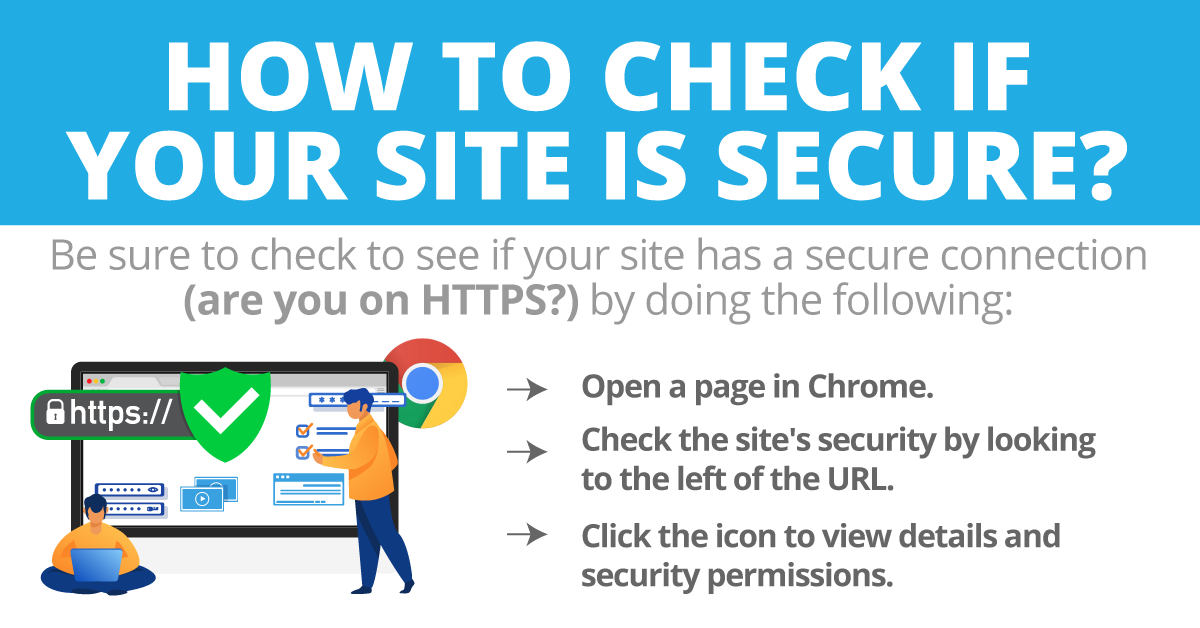In today’s digital landscape, one might ponder: is your site really secure? In an era where cyber threats loom large, ensuring the security of your website is not merely an afterthought but a critical component of your online presence. Think about it—your website is your virtual storefront. If the door is left ajar, intruders can easily infiltrate and wreak havoc. This begs the question: how can you be proactive in safeguarding your digital domain?
Here’s a comprehensive guide delineating the essential steps to ascertain your site’s security. By examining these aspects, you can arm yourself against potential vulnerabilities and ensure a robust, secure environment for you and your users.
1. Evaluate Your HTTPS Status
One of the foremost indicators of website security is the presence of HTTPS instead of HTTP. Hypertext Transfer Protocol Secure (HTTPS) employs encryption protocols that shield data exchanged between your web server and users. To check if your site employs HTTPS, look for a padlock symbol in the address bar of your browser. If the padlock is absent, this indicates an unsecured site, potentially exposing users’ sensitive information.
Moreover, Google has indicated that HTTPS contributes to better search engine rankings. This dual benefit—enhanced security and improved SEO—makes HTTPS indispensable for contemporary websites.
2. Conduct a Comprehensive Vulnerability Scan
Using automated tools to conduct vulnerability scans can unveil weak points within your site’s infrastructure. These scans can identify issues such as outdated CMS versions, insecure plugins, and configuration errors that could be exploited by malicious actors. Tools like OpenVAS or Nessus can be employed to perform these vital assessments.
After identifying vulnerabilities, prioritize them based on the severity of the risk. Address the most critical concerns immediately, ensuring that your digital foundation remains steadfast against potential breaches.
3. Ensure Regular Software Updates
Keeping your software up to date is tantamount to reinforcing your cybersecurity defenses. This includes your content management system (CMS), plugins, and any other software utilized on your site. Regular updates frequently include patches for security vulnerabilities that hackers might exploit.
Establish a routine where updates are meticulously checked and applied promptly. Automation can be useful here, but always ensure thorough testing before deploying updates to avoid unforeseen issues.
4. Implement Strong Password Policies
Consider this: would you leave the door to your home unlocked? Likewise, utilizing strong passwords is paramount for safeguarding your online assets. A robust password should encompass at least 12 characters, incorporating a mix of uppercase letters, lowercase letters, numbers, and symbols. Encourage users to opt for unique passwords and consider implementing two-factor authentication (2FA) for an additional layer of security.
Educating those with access to your site about these practices fosters a security-conscious culture, further mitigating possible risks.
5. Utilize a Web Application Firewall (WAF)
A Web Application Firewall acts as a shield between your web server and potential threats. By filtering and monitoring HTTP traffic to and from your site, a WAF can thwart attacks, such as SQL injection and cross-site scripting (XSS). Various solutions are available, both self-hosted and cloud-based, allowing you to choose one that fits your needs.
Integrating a WAF not only enhances security but can also expedite website performance by caching content and reducing server load.
6. Back Up Your Data Regularly
In the event of a successful cyber attack, having backups of your website can be a lifesaver. Regularly scheduled backups ensure that you can restore your site to a previous state, minimizing downtime and data loss. Employ automated backup solutions that store copies in multiple locations, such as cloud storage and external drives.
Test your backups periodically to confirm that they can be restored without complications. A well-structured backup strategy is an essential component of a holistic security plan.
7. Educate Yourself About Phishing Attacks
As an administrator, being aware of the tactics employed by cybercriminals is crucial. Phishing attacks often masquerade as legitimate emails, luring unsuspecting victims into divulging sensitive information. Familiarize yourself with common phishing techniques and employ email filters to catch malicious messages before they reach your inbox.
Regular training sessions for your team can also significantly reduce the risk of falling prey to these deceptive tactics. Knowledge is a formidable weapon in the fight against cyber threats.
8. Monitor Your Website for Intrusions
Continuous monitoring of your website can alert you to unauthorized activity. Tools such as intrusion detection systems (IDS) and security information and event management (SIEM) solutions can provide real-time alerts regarding suspicious activities, allowing for immediate response and mitigation.
Moreover, regularly reviewing access logs can help you spot anomalies that may signify an intrusion attempt. Proactivity in monitoring can serve as a robust deterrent against potential breaches.
Conclusion
In conclusion, ensuring your site’s security requires a multifaceted approach. Evaluating your HTTPS status, conducting vulnerability scans, maintaining regular updates, and employing strong password policies are just a handful of strategies that fortify your defenses. The digital realm is rife with challenges, but by being diligent and informed, you can shield your site and create a secure environment for everyone involved. So, as you embark on this journey of enhancing your website security, one question remains: Are you ready to take the necessary steps to protect your digital presence?









Leave a Comment